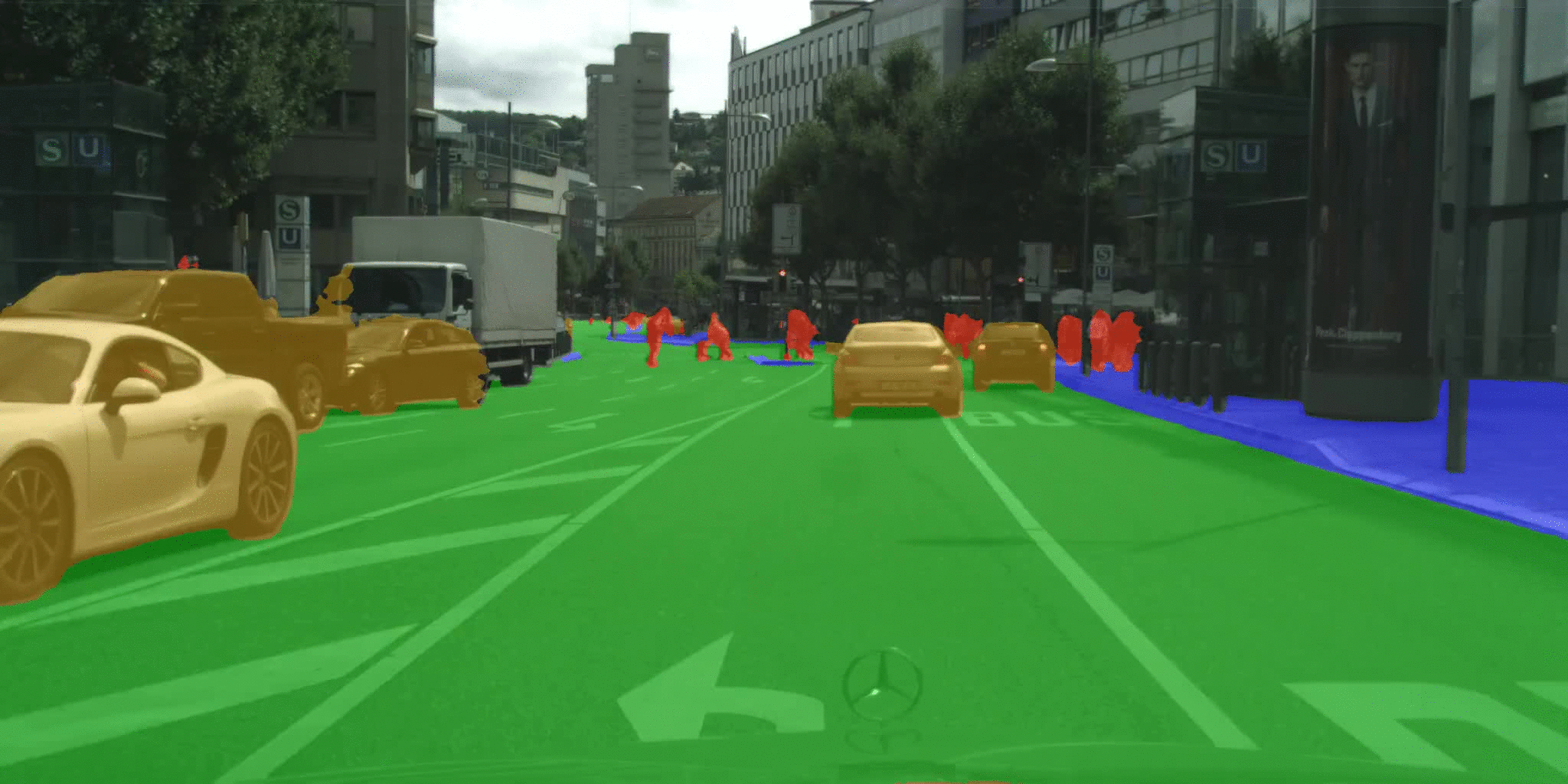Pytorch-Segmentation-Detection is a library for image segmentation and object detection with reported results achieved on common image segmentation/object detection datasets, pretrained models and scripts to reproduce them.
Implemented models were tested on Restricted PASCAL VOC 2012 Validation dataset (RV-VOC12) or Full PASCAL VOC 2012 Validation dataset (VOC-2012) and trained on the PASCAL VOC 2012 Training data and additional Berkeley segmentation data for PASCAL VOC 12.
You can find all the scripts that were used for training and evaluation here.
This code has been used to train networks with this performance:
| Model | Test data | Mean IOU | Mean pix. accuracy | Pixel accuracy | Inference time (512x512 px. image) | Model Download Link | Related paper |
|---|---|---|---|---|---|---|---|
| Resnet-18-8s | RV-VOC12 | 59.0 | in prog. | in prog. | 28 ms. | Dropbox | DeepLab |
| Resnet-34-8s | RV-VOC12 | 68.0 | in prog. | in prog. | 50 ms. | Dropbox | DeepLab |
| Resnet-50-16s | VOC12 | 66.5 | in prog. | in prog. | in prog. | in prog. | DeepLab |
| Resnet-50-8s | VOC12 | 67.0 | in prog. | in prog. | in prog. | in prog. | DeepLab |
| Resnet-50-8s-deep-sup | VOC12 | 67.1 | in prog. | in prog. | in prog. | in prog. | DeepLab |
| Resnet-101-16s | VOC12 | 68.6 | in prog. | in prog. | in prog. | in prog. | DeepLab |
| PSP-Resnet-50-8s | VOC12 | 73.6 | n/a | n/a | n/a | in prog. | PSPnet |
Some qualitative results:
Implemented models were trained on Endovis 2017 segmentation dataset and the sequence number 3 was used for validation and was not included in training dataset.
The code to acquire the training and validating the model is also provided in the library.
Additional Qualitative results can be found on this youtube playlist.
| Model | Test data | Mean IOU | Mean pix. accuracy | Pixel accuracy | Inference time (512x512 px. image) | Model Download Link |
|---|---|---|---|---|---|---|
| Resnet-9-8s | Seq # 3 * | 96.1 | in prog. | in prog. | 13.3 ms. | Dropbox |
| Resnet-18-8s | Seq # 3 | 96.0 | in prog. | in prog. | 28 ms. | Dropbox |
| Resnet-34-8s | Seq # 3 | in prog. | in prog. | in prog. | 50 ms. | in prog. |
Resnet-9-8s network was tested on the 0.5 reduced resoulution (512 x 640).
Qualitative results (on validation sequence):
| Model | Test data | Mean IOU | Mean pix. accuracy | Pixel accuracy | Inference time (512x512 px. image) | Model Download Link |
|---|---|---|---|---|---|---|
| Resnet-18-8s | Seq # 3 | 81.0 | in prog. | in prog. | 28 ms. | Dropbox |
| Resnet-34-8s | Seq # 3 | in prog. | in prog. | in prog. | 50 ms. | in prog |
Qualitative results (on validation sequence):
The dataset contains video sequences recorded in street scenes from 50 different cities, with high quality pixel-level annotations of 5 000 frames. The annotations contain 19 classes which represent cars, road, traffic signs and so on.
| Model | Test data | Mean IOU | Mean pix. accuracy | Pixel accuracy | Inference time (512x512 px. image) | Model Download Link |
|---|---|---|---|---|---|---|
| Resnet-18-8s | Validation set | 60.0 | in prog. | in prog. | 28 ms. | Dropbox |
| Resnet-34-8s | Validation set | 69.1 | in prog. | in prog. | 50 ms. | Dropbox |
Qualitative results (on validation sequence):
Whole sequence can be viewed here.
This code requires:
-
Some libraries which can be acquired by installing Anaconda package.
Or you can install
scikit-image,matplotlib,numpyusingpip. -
Clone the library:
git clone --recursive https://github.com/warmspringwinds/pytorch-segmentation-detection
And use this code snippet before you start to use the library:
import sys
# update with your path
# All the jupyter notebooks in the repository already have this
sys.path.append("/your/path/pytorch-segmentation-detection/")
sys.path.insert(0, '/your/path/pytorch-segmentation-detection/vision/')Here we use our pytorch/vision fork, which might be merged and futher merged in a future. We have added it as a submodule to our repository.
- Download segmentation or detection models that you want to use manually (links can be found below).
If you used the code for your research, please, cite the paper:
@article{pakhomov2017deep,
title={Deep Residual Learning for Instrument Segmentation in Robotic Surgery},
author={Pakhomov, Daniil and Premachandran, Vittal and Allan, Max and Azizian, Mahdi and Navab, Nassir},
journal={arXiv preprint arXiv:1703.08580},
year={2017}
}
During implementation, some preliminary experiments and notes were reported:



